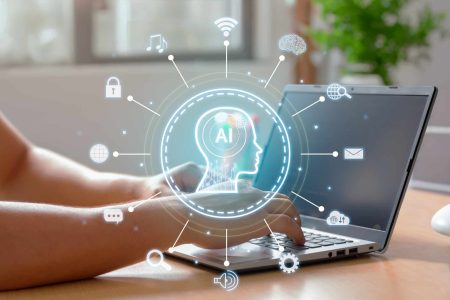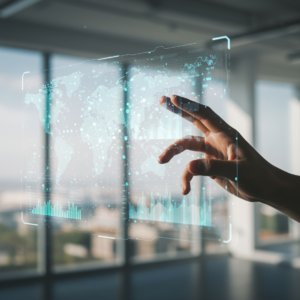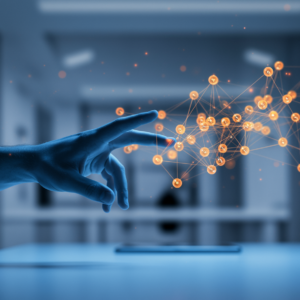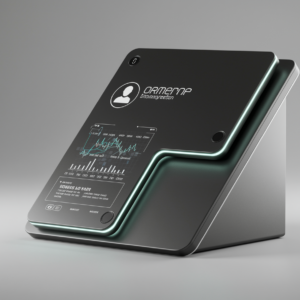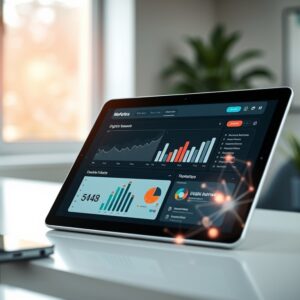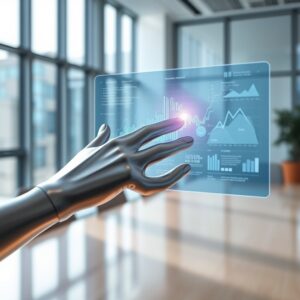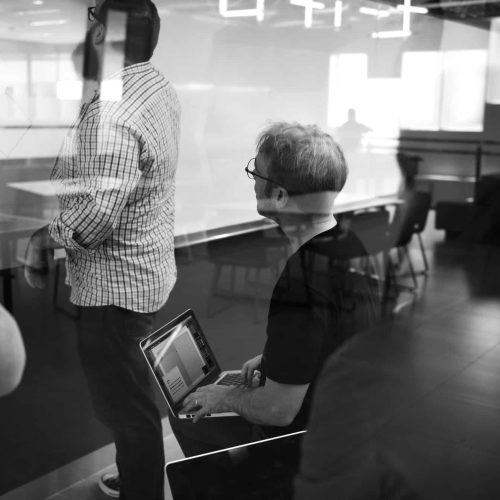Artificial Intelligence (AI) has come a long way since its inception, evolving from simple, single-agent systems to more complex and sophisticated multiagent systems. This shift marks a significant milestone in the AI landscape, enabling systems to collaborate, communicate, and solve problems more efficiently than ever before. Understanding how multiagent systems work is key to appreciating their transformative impact. These systems are being increasingly applied across various industries, from healthcare to finance, showcasing their diverse capabilities. Despite the numerous benefits of using multiagent systems in AI, there are challenges and limitations that need to be addressed. Examining successful case studies offers valuable insights into overcoming these hurdles. Looking ahead, the future of multiagent systems in AI is brimming with potential, with new innovations poised to revolutionize the field. This exploration will uncover what’s next for multiagent systems and highlight the key takeaways you need to navigate this dynamic area of AI.
Content
Introduction to Multiagent Systems in AI
### Defining Multiagent Systems
Multiagent systems (MAS) refer to a group of agents that interact within a shared environment to achieve specific goals. These agents can be software programs capable of performing tasks independently or in cooperation with other agents. The essence of multiagent systems lies in their distributed nature, permitting a decentralized approach to problem-solving. Unlike traditional AI systems focused on singular entities, MAS leverage the power of multiple, autonomous agents to handle complex tasks more effectively. By coordinating actions and sharing information, these systems enhance decision-making processes and optimize outcomes across various applications. Understanding MAS requires a grasp of the dynamics between agents and their collective intelligence.
### Historical Context of Multiagent Systems
The concept of multiagent systems has roots in the 1980s, emerging from fields such as distributed AI and robotics. Initially, researchers grappled with theoretical models to define how multiple agents could cooperate and interact within a system. Early advancements focused on basic coordination mechanisms, paving the way for more sophisticated models. As computational power increased and algorithms advanced, MAS evolved from theoretical constructs into practical applications. This historical trajectory showcases the gradual refinement and growing complexity of MAS, illustrating their capacity to adapt to continually changing technological landscapes. The historical context underscores the foundational principles and early challenges that shaped modern MAS.
### Core Components of Multiagent Systems
Multiagent systems are composed of several core components: agents, environments, and interaction protocols. Agents are the individual entities within the system, each with distinct capabilities and roles. The environment is the shared space where agents operate and interact, providing the context for their actions. Interaction protocols define how agents communicate and collaborate, ensuring effective coordination and conflict resolution. Together, these components establish a dynamic and flexible framework, enabling MAS to address multifaceted problems. The interplay between agents, environments, and protocols is crucial for the system’s overall functionality and efficiency. Understanding these components offers a comprehensive view of how MAS achieve complex objectives.
The Evolution of AI: From Single Agent to Multiagent Systems
Early stages of AI predominantly involved single-agent systems, where individual systems were designed to solve specific, isolated tasks. These initial AI agents had limited interaction capabilities and operated in static environments, focusing on singular objectives such as playing chess or solving mathematical problems. The primary advantage of single-agent systems was their simplicity, making them easier to design and implement. However, this simplicity also meant that they were ill-equipped to handle complex, dynamic situations or tasks requiring cooperation and real-time adaptability. The limitations highlighted the need for more advanced, collaborative approaches to AI.
As AI research progressed, the limitations of single-agent systems became more apparent, prompting the development of multiagent systems (MAS). Researchers recognized that multiple agents working together could tackle more complex problems by leveraging distributed intelligence. In these systems, each agent acts autonomously but can communicate and collaborate with other agents, creating a network of integrated entities. This shift allowed for a more dynamic approach to problem-solving, enabling systems to adapt to changing environments and tasks. The evolution towards MAS was driven by advancements in computational capabilities, theoretical models, and algorithms that supported decentralized decision-making and coordination among agents.
The move from single-agent to multiagent systems marked a pivotal transformation in AI, enabling more sophisticated applications across various domains. In contrast to single-agent systems, MAS can handle tasks such as real-time resource allocation, complex simulations, and collaborative learning. The evolution brought about new opportunities and complexities, including the need for robust interaction protocols, conflict resolution mechanisms, and scalable architectures. This transition has paved the way for more resilient and adaptable AI systems, capable of addressing real-world challenges with greater efficacy. Consequently, MAS are increasingly being adopted in sectors such as autonomous vehicles, smart grids, and financial trading, demonstrating their enhanced capabilities and transformative potential.
How Multiagent Systems Work
### Communication Among Agents
Communication is a cornerstone of multiagent systems, enabling agents to share information, coordinate actions, and achieve collective goals. Agents typically communicate through well-defined protocols and languages, such as the Knowledge Query and Manipulation Language (KQML) or the Foundation for Intelligent Physical Agents (FIPA) specifications. These protocols facilitate the exchange of messages, queries, and commands, allowing agents to negotiate, cooperate, and resolve conflicts. Effective communication ensures that agents are aware of their peers’ actions and intentions, which is crucial for synchronized activities and decision-making. The efficiency and reliability of an MAS heavily depend on the robustness of its communication mechanisms.
### Coordination and Cooperation
Coordination and cooperation are vital aspects that determine the functionality and success of multiagent systems. Agents must align their actions and strategies to work towards common objectives, often requiring sophisticated coordination techniques. These can include task allocation algorithms, consensus protocols, and shared plans. Cooperation involves agents contributing their resources and capabilities to a collective effort, optimizing individual strengths for the greater good. Techniques like contract net protocols and distributed planning enable agents to dynamically allocate tasks and adjust their actions based on real-time feedback. Effective coordination and cooperation are critical for achieving the efficiency and scalability that characterize successful MAS implementations.
### Decision-Making Processes
In multiagent systems, decision-making processes are distributed among various agents, each contributing to the overall outcome. Agents use local knowledge and interaction outcomes to make decisions, employing strategies that range from simple rule-based methods to advanced learning algorithms. Decision-making can involve negotiation, voting, and consensus mechanisms to ensure that the actions of individual agents align with the system’s collective goals. Machine learning and reinforcement learning techniques are also employed to enable agents to adapt and improve their decisions over time. This decentralized approach to decision-making enhances flexibility and robustness, allowing the system to respond effectively to changing environments and unforeseen challenges.
Transform your business with custom AI solutions from a leading Artificial Intelligence Agency.
Applications of Multiagent Systems in AI
Multiagent systems are revolutionizing urban transportation through advanced traffic management solutions. In smart transportation systems, multiple agents operate to regulate traffic lights, optimize route planning, and reduce congestion. Each agent monitors real-time traffic conditions and communicates with other agents to coordinate actions and reduce travel delays. For instance, adaptive traffic signal systems use data from connected vehicles and roadside sensors to adjust signal timings dynamically. This decentralized approach enhances traffic flow, reduces emissions, and improves overall urban mobility. As cities grow increasingly complex, MAS provide a scalable and efficient solution to urban transportation challenges.
In healthcare, multiagent systems enhance patient care and streamline hospital operations. Agents can manage tasks ranging from scheduling appointments to monitoring patient vitals and managing medical inventories. For example, in a hospital setting, agents can coordinate to ensure that medical staff and resources are optimally allocated, increasing the efficiency of operations. Additionally, agents can integrate data from electronic health records, wearable devices, and other sources to provide personalized care recommendations. By enabling real-time data sharing and coordination among various healthcare stakeholders, MAS improve patient outcomes and resource management, contributing to more effective and responsive healthcare systems.
Multiagent systems are also transforming the financial industry by optimizing trading strategies, risk management, and fraud detection. In algorithmic trading, multiple agents can analyze market conditions, execute trades, and adjust strategies in real-time based on market fluctuations. This allows for more informed and agile trading decisions, maximizing profits while minimizing risks. Similarly, MAS can enhance risk management by monitoring market trends and potential stressors, offering timely insights to stakeholders. In fraud detection, agents can analyze transaction patterns, identify anomalies, and flag suspicious activities for further investigation. By leveraging the collective intelligence and collaborative capabilities of MAS, financial institutions can enhance decision-making processes and improve operational efficiency.
Experience effortless, cost-effective social media management with AI technologies
Benefits of Using Multiagent Systems in AI
### Enhanced Problem-Solving Capabilities
Multiagent systems significantly enhance problem-solving capabilities by distributing tasks among multiple autonomous agents, each bringing specialized expertise and local knowledge. This distributed approach allows for parallel processing and efficient resource utilization, enabling the system to tackle more complex and multifaceted problems than single-agent systems. For instance, in disaster management scenarios, different agents can simultaneously handle various tasks such as resource allocation, emergency response, and communication coordination. By leveraging the collective intelligence of multiple agents, MAS ensure more robust and dynamic solutions, which are crucial in rapidly changing environments and situations requiring real-time decision-making.
### Increased Scalability and Flexibility
One of the key benefits of multiagent systems is their inherent scalability and flexibility. As the number of agents can be adjusted based on the complexity and scope of tasks, MAS can efficiently scale to meet varying demands. This adaptability makes MAS ideal for applications such as smart grids and autonomous vehicles, where the system needs to handle numerous dynamic elements and unforeseen changes. Agents can join or leave the system without disrupting overall functionality, allowing for seamless integration of new capabilities and resources. This flexibility ensures that MAS can evolve in response to technological advancements and changing requirements.
### Improved Robustness and Reliability
Multiagent systems offer improved robustness and reliability, thanks to their decentralized nature and redundancy. If one agent fails or encounters an issue, other agents can continue to operate and compensate for the loss, minimizing the impact on the overall system. This fault tolerance is particularly valuable in critical applications such as military defense or space exploration, where system failures can have severe consequences. Additionally, the diversity of agents’ strategies and perspectives contributes to more resilient solutions, as the system is less likely to be disrupted by single points of failure. By distributing risk and increasing redundancy, MAS enhance the overall reliability and dependability of complex AI systems.
Challenges and Limitations of Multiagent Systems
One of the primary challenges of implementing multiagent systems is ensuring effective coordination among agents. As the number of agents increases, managing the interactions, communications, and dependencies between them becomes increasingly complex. This complexity can lead to issues such as communication overhead, where the system’s performance is hindered by the sheer volume of messages exchanged. Additionally, achieving coherent and synchronized actions among independent agents requires sophisticated algorithms and protocols. Without effective coordination, agents may work at cross purposes or duplicate efforts, reducing the system’s overall efficiency and effectiveness.
Security and trust are significant concerns in multiagent systems, particularly in environments involving sensitive data or critical operations. Since agents often communicate and share information openly within the system, they are susceptible to security breaches and malicious attacks. Ensuring that agents can authenticate each other and that communication remains secure is essential to maintaining the system’s integrity. Furthermore, trust mechanisms must be in place to evaluate the reliability and credibility of information shared by different agents. Addressing these security challenges requires robust encryption techniques, authentication protocols, and trust management strategies, which can complicate the system’s design and increase computational overhead.
Scalability remains a critical limitation despite the inherent flexibility of multiagent systems. While MAS can theoretically scale by adding more agents, practical challenges emerge as the system grows. The computational resources required for coordination, communication, and decision-making can escalate dramatically, leading to performance bottlenecks. Additionally, ensuring that new agents seamlessly integrate without disrupting existing operations can be complex. The dynamic nature of MAS also means that as the system scales, new, unforeseen interactions and dependencies may arise, necessitating ongoing management and adaptation. Balancing scalability with performance and reliability is an ongoing challenge that requires continuous research and optimization efforts.
Elevate your business with DIGITALON AI’s custom AI services and solutions.
Case Studies of Successful Multiagent Systems
### Smart Transportation in Singapore
Singapore has implemented a cutting-edge smart transportation system leveraging multiagent technology to combat traffic congestion and enhance urban mobility. The system utilizes numerous autonomous agents to manage traffic lights, monitor traffic conditions, and adjust signal timings in real-time. Each agent can communicate with others and with central control systems, making informed decisions based on real-time data. This decentralized approach enables rapid response to traffic incidents, optimizing traffic flow across the city. The successful deployment of this system has led to significantly reduced travel times and lower vehicle emissions, demonstrating the effectiveness of MAS in urban transportation.
### Collaborative Robots in Manufacturing
In the manufacturing sector, the automotive giant BMW has successfully integrated multiagent systems to optimize production lines and enhance operational efficiency. Collaborative robots, or “cobots,” function as individual agents tasked with completing specific manufacturing processes, from assembly to quality control. These agents communicate and coordinate with each other, adjusting their actions based on real-time feedback and changing production requirements. This dynamic interaction allows for greater flexibility and adaptability in the production process, minimizing downtime and increasing throughput. The implementation of MAS in BMW’s manufacturing operations has led to improved productivity, higher quality standards, and more efficient resource utilization.
### Energy Management in Smart Grids
The Pacific Northwest Smart Grid Demonstration Project in the United States showcases the application of multiagent systems in energy management. The project involves numerous agents distributed across the smart grid, each responsible for monitoring and managing different aspects of energy distribution and consumption. These agents can autonomously adjust power loads, integrate renewable energy sources, and respond to real-time demand fluctuations. By coordinating their actions, the agents ensure a stable and reliable energy supply while optimizing the use of resources and reducing costs. The success of this project highlights the potential of MAS to enhance the efficiency and resilience of modern energy systems, paving the way for more sustainable energy management solutions.
The Future of Multiagent Systems in AI
As technology continues to advance, the future of multiagent systems in AI looks promising, with numerous opportunities for innovation and expansion. One of the most exciting developments is the integration of MAS with emerging technologies such as the Internet of Things (IoT) and 5G networks. This convergence will enable more seamless and efficient communication between agents across vast networks, enhancing their ability to manage complex tasks in real-time. With the proliferation of connected devices, MAS can play a critical role in optimizing operations in smart cities, autonomous vehicles, and industrial automation, driving increased efficiency and improved user experiences.
Another significant area of growth for multiagent systems is in the field of artificial general intelligence (AGI). While current AI systems are designed for specific tasks, AGI aims to create machines capable of understanding, learning, and applying knowledge across a wide range of domains. MAS can contribute to this vision by enabling distributed problem-solving and knowledge-sharing among autonomous agents. By working collaboratively, agents can pool their collective intelligence to tackle more ambitious and complex challenges that single-agent systems cannot handle. This cooperative approach can accelerate advancements in AI, bringing us closer to the realization of AGI and unlocking new possibilities for innovation and discovery.
Ethical considerations and governance will also shape the future of multiagent systems in AI. As MAS become more integral to critical applications such as healthcare, finance, and public safety, ensuring that these systems operate transparently, fairly, and ethically will be paramount. Researchers and policymakers will need to develop robust frameworks for the responsible deployment and management of MAS, addressing issues such as data privacy, security, and accountability. Establishing ethical guidelines and regulatory standards will help build trust in MAS, enabling their broader adoption and ensuring that their benefits are realized in a manner that aligns with societal values and expectations.
Innovations on the Horizon for Multiagent Systems
### Advanced Machine Learning Techniques
One of the most promising innovations on the horizon for multiagent systems is the incorporation of advanced machine learning techniques. By integrating deep learning and reinforcement learning, agents can gain more sophisticated capabilities, such as adaptive learning and improved decision-making. These techniques enable agents to better understand and predict complex environments, allowing for more effective collaboration and problem-solving. For instance, reinforcement learning can help agents dynamically adjust their strategies based on real-time feedback, optimizing their performance in uncertain or changing conditions. This advancement will enhance the overall efficiency and adaptability of MAS, making them more robust and capable of handling complex tasks.
### Blockchain Integration
Blockchain technology offers significant potential for enhancing the security and transparency of multiagent systems. By integrating blockchain, MAS can achieve decentralized trust and data integrity, ensuring that all transactions and interactions among agents are secure and verifiable. This is particularly valuable in applications where data privacy and authenticity are paramount, such as finance and healthcare. Blockchain can also facilitate more efficient and transparent coordination among agents, as smart contracts can be used to automate and enforce agreements. The combination of MAS with blockchain technology can revolutionize how distributed systems operate, providing a secure and reliable foundation for various collaborative applications.
### Enhanced Human-Agent Collaboration
Innovations focused on enhancing human-agent collaboration are set to transform how multiagent systems interact with and support human users. By incorporating advanced natural language processing and intuitive user interfaces, agents can communicate more effectively with humans, making MAS more accessible and user-friendly. These advancements allow for seamless integration of human intelligence with the capabilities of MAS, enabling more effective human-machine collaboration. Applications such as virtual assistants, collaborative robots, and decision support systems can all benefit from improved human-agent interaction. This innovation will make MAS more versatile and practically useful, empowering users to harness the full potential of multiagent systems in various domains.
Conclusion and Key Takeaways
Multiagent systems (MAS) have proven to be a transformative force in the realm of artificial intelligence, driving advancements across various sectors including urban transportation, healthcare, manufacturing, and energy management. By distributing tasks among multiple autonomous agents, MAS enhance problem-solving capabilities, improve scalability, and increase robustness. These systems enable more efficient resource utilization and real-time decision-making, addressing the limitations of traditional single-agent AI systems. The successful implementation of MAS in real-world applications underscores their potential to revolutionize how complex problems are tackled.
Despite their numerous benefits, multiagent systems also face significant challenges and limitations. Effective coordination among agents, security concerns, and scalability issues are critical obstacles that must be addressed to unlock the full potential of MAS. Researchers and practitioners are actively working on developing robust communication protocols, trust management strategies, and scalable architectures to overcome these hurdles. Addressing these challenges is crucial for ensuring that MAS can operate efficiently and securely, particularly in environments involving sensitive data or critical operations.
Looking towards the future, the integration of advanced machine learning techniques, blockchain technology, and enhanced human-agent collaboration are set to further elevate the capabilities of multiagent systems. These innovations will enable more sophisticated, secure, and user-friendly MAS, expanding their applicability and impact across various domains. As technology continues to evolve, the role of MAS in AI will only grow more prominent, driving new possibilities for innovation and discovery. By embracing these advancements and addressing the associated challenges, multiagent systems can continue to pave the way for more intelligent, adaptive, and resilient solutions in the ever-evolving landscape of artificial intelligence.












